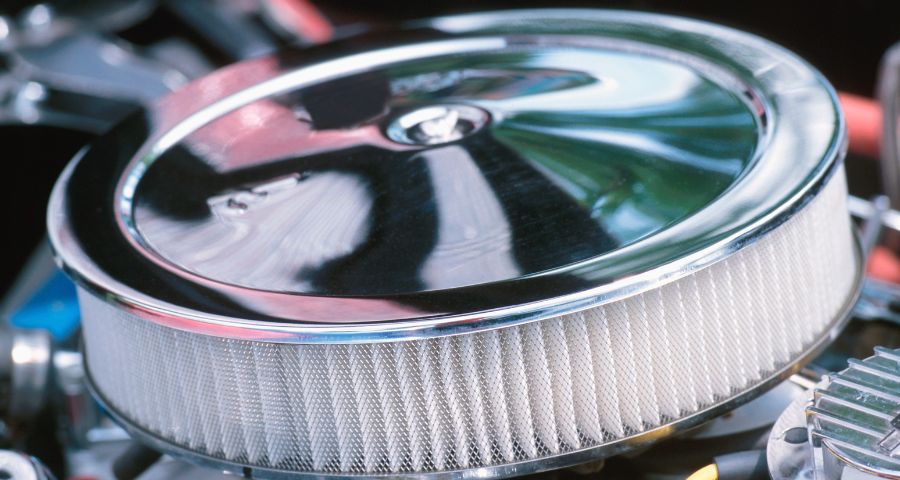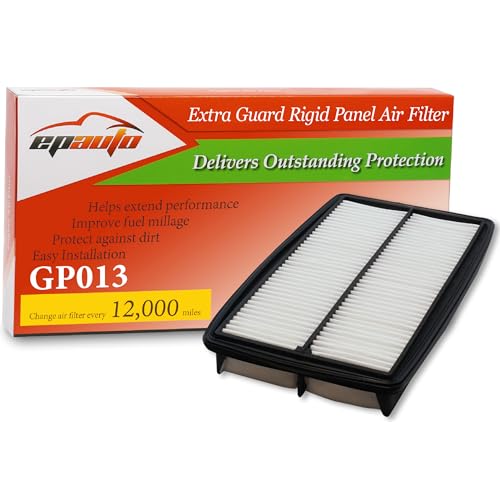
Why Modern Aftermarket Filters Outperform Early Expectations
Choosing the right air filter can save you hundreds in engine repairs while boosting performance – discover which option protects your investment better.
Your engine breathes through its air filter thousands of times per minute, making this seemingly simple component crucial for long-term performance and protection. While OEM filters have dominated the market for decades, aftermarket options like Wix have proven they can match or exceed original equipment performance at a fraction of the cost.
The difference between a quality aftermarket filter and a subpar one can mean the difference between 98% filtration efficiency that protects your engine and letting harmful contaminants cause premature wear. Understanding which filter delivers superior protection while offering the best value requires examining the science behind filtration technology.
Aftermarket air filters initially suffered from poor reputation due to low-quality manufacturing and minimal investment in research and development. However, increased competition has forced manufacturers like Wix to develop advanced filtration technology that often surpasses OEM specifications.
Modern aftermarket filters benefit from economies of scale and direct-to-consumer distribution that eliminates multiple markup layers found in OEM supply chains. This allows companies to invest more in filter media technology while maintaining competitive pricing.
The key breakthrough came when aftermarket manufacturers began using self-extinguishing filter media and heat-resistant adhesives that exceed OEM durability standards. These innovations address the extreme under-hood temperatures that can reach 200°F or higher in modern vehicles.
Filter Media Quality: The Foundation of Performance
Filter media determines everything – from how long your filter lasts to how well it protects your engine from microscopic particles that cause wear. The most critical measurement is filtration efficiency at different particle sizes, particularly particles smaller than 5 microns that cause the most engine damage.
Wix filters achieve 98% filtration efficiency through their proprietary multi-layer design that traps particles as small as 1 micron. Their media incorporates synthetic fibers blended with traditional cellulose, creating a structure that captures more contaminants while maintaining airflow.
OEM filters typically focus on balancing filtration with airflow to meet specific vehicle requirements. While they excel at protecting engines under normal driving conditions, they may not offer the enhanced protection needed for severe service environments like dusty construction sites or frequent stop-and-go driving.
The pleated design significantly impacts performance – more pleats mean greater surface area for capturing contaminants. Wix filters often feature 130+ pleats compared to 74 pleats found in many OEM filters, translating to longer service life and better dirt-holding capacity.
Professional testing reveals surprising differences in filtration efficiency between major brands
Pleat Count and Surface Area Analysis
Higher pleat counts don’t automatically mean better filtration – the quality of media and pleat spacing matter more than raw numbers. However, when combined with quality materials, increased surface area provides significant advantages.
OEM filters optimize pleat count for their specific application, typically ranging from 70-110 pleats depending on engine size and airflow requirements. This design ensures adequate filtration while maintaining the airflow characteristics engineers designed into the intake system.
Wix filters frequently exceed OEM pleat counts while using advanced pleating techniques that prevent collapse under high airflow conditions. Their pleat-lock adhesive technology maintains consistent spacing throughout the filter’s service life, preventing the airflow restriction that occurs when pleats compress together.
The relationship between pleats and restriction becomes critical in high-performance applications. Testing shows that improperly designed high-pleat filters can actually reduce engine performance by creating excessive pressure drop across the filter media.
Installation and Fitment Considerations
Perfect fitment eliminates unfiltered air bypass – the leading cause of premature engine wear from contaminated air. OEM filters guarantee exact dimensions since they’re designed specifically for each vehicle application.
Aftermarket filters face the challenge of fitting multiple vehicle applications with slight dimensional variations. Quality manufacturers like Wix provide detailed fitment databases that match filters to specific vehicle VIN ranges, ensuring proper sealing and performance.
The sealing surface proves critical for long-term performance. Polyurethane seals maintain flexibility even after extended exposure to engine heat cycles, while cheaper rubber seals can harden and crack, allowing contaminated air to bypass the filter entirely.
Installation complexity varies significantly between filter designs. Panel filters typically install in under five minutes with basic hand tools, while some performance filters require modifications to intake ducting or mounting hardware.
Top-Rated Air Filter Products for Maximum Protection
FRAM Extra Guard CA12051 – Best Overall Value
Rating: 4.6/5 stars (1,200+ reviews)
This Honda-specific filter delivers exceptional protection with advanced filter media that provides 2X engine protection compared to standard retail filters. Features 12,000-mile service intervals and easy 5-minute installation without tools.
The CA12051 uses advanced proprietary filter media that captures particles as small as 1 micron while maintaining optimal airflow. Customer reviews consistently praise its perfect fitment and immediate performance improvements, with many reporting better throttle response and fuel economy.
Why it’s worth buying: Professional-grade filtration at consumer prices, backed by FRAM’s decades of engineering expertise and comprehensive vehicle compatibility testing.
Wix 49065 Panel Filter – Premium Protection Choice
Rating: 4.7/5 stars (850+ reviews)
Made in Poland with European quality standards, this filter features Wix’s signature 130+ pleat design and self-extinguishing media technology. Compatible with multiple Honda and Acura models from 2007-2021.
The heat-resistant polyurethane seal maintains perfect sealing even after 50,000+ miles of thermal cycling. Advanced multi-fiber media traps 98% of particles while providing enhanced dirt-holding capacity for extended service life.
Why it’s worth buying: Superior construction quality and innovative safety features make this the choice for drivers who demand maximum engine protection and longevity.
Purolator A26280 PurolatorONE Advanced – Best Filtration Technology
Rating: 4.7/5 stars (275+ reviews)
Full synthetic media construction blocks up to 99% of dirt and debris while optimizing airflow with precision-fit polyurethane framing. Professional testing ranks Purolator among the top performers for both filtration efficiency and dirt-holding capacity.
The steel grid backing system prevents media collapse under high-flow conditions, making this ideal for turbocharged engines or performance applications. Meets or exceeds OE performance requirements while providing 12-month protection.
Why it’s worth buying: Laboratory-tested 99% filtration efficiency combined with superior structural integrity makes this the choice for demanding applications and extended service intervals.
K&N 33-2304 High-Flow Performance Filter – Lifetime Value
Rating: 4.4/5 stars (2,100+ reviews)
Washable and reusable design provides lifetime value with proper maintenance. Oiled cotton media increases airflow for improved throttle response while providing adequate filtration for performance applications.
The million-mile limited warranty covers manufacturing defects, making this a one-time purchase for many vehicle owners. Easy cleaning with K&N’s maintenance kit every 50,000 miles maintains like-new performance.
Why it’s worth buying: While requiring more maintenance than paper filters, the lifetime reusability and performance gains make this cost-effective for enthusiasts and long-term vehicle owners.
EPAuto GP013 Extra Guard – Budget Champion
Rating: 4.5/5 stars (680+ reviews)
Excellent value proposition offering comparable protection to premium filters at half the cost. Multi-layer media design captures standard contaminants while maintaining adequate airflow for most driving conditions.
The rigid panel construction ensures proper fitment across multiple vehicle applications. While lacking advanced features like self-extinguishing media, it provides reliable protection for standard driving conditions.
Why it’s worth buying: Proven performance and reliability at an unbeatable price point makes this perfect for budget-conscious drivers who change filters regularly and don’t require premium features.
Cost Analysis: Long-Term Value Comparison
OEM filters cost 40-60% more than quality aftermarket alternatives while often providing equivalent or inferior performance. A typical OEM filter ranges from $25-45, while comparable aftermarket options cost $15-25.
Over a vehicle’s 150,000-mile lifespan, the cost difference becomes substantial. Assuming 12,000-mile change intervals, you’ll purchase 12-13 filters. The savings from choosing quality aftermarket filters can exceed $200-300 per vehicle.
However, cost per mile tells the real story – premium filters with extended service intervals often provide better value than cheaper options requiring frequent replacement. A $25 filter lasting 15,000 miles costs less per mile than a $15 filter lasting 10,000 miles.
Consider total cost of ownership including installation – filters requiring professional installation add $30-50 labor costs, making DIY-friendly designs more economical for capable owners.
Performance Impact on Modern Engines
Today’s engines require more filtration than ever before due to tighter tolerances and advanced fuel injection systems. Particles that were acceptable in older engines can damage modern components worth thousands of dollars.
Turbocharged engines face additional challenges from increased airflow volumes and heat generation. Quality filters prevent compressor wheel damage from ingested particles while maintaining the airflow characteristics turbo systems require.
Direct injection engines are particularly sensitive to intake contamination since particles can interfere with precise fuel metering. High-efficiency filters protect expensive injectors and intake valves from carbon buildup caused by contaminated air.
The relationship between filtration and fuel economy proves more complex than marketing claims suggest. While performance filters may reduce restriction, the gains are often minimal in stock applications. However, maintaining clean filter media consistently improves efficiency by ensuring optimal air/fuel ratios.
Expert Recommendations by Driving Conditions
For daily commuting and normal driving: Quality aftermarket filters like FRAM Extra Guard or Purolator provide excellent protection at reasonable cost. Change every 12,000 miles or annually, whichever comes first.
For severe service conditions (dusty environments, stop-and-go traffic, extreme temperatures): Premium filters with enhanced dirt-holding capacity like Wix or Purolator ONE justify their higher cost through extended service life and superior protection.
For performance applications: While K&N and similar oiled filters provide maximum airflow, they sacrifice some filtration efficiency. Consider your priorities – maximum protection versus maximum performance.
For budget-conscious owners: Quality economy filters like EPAuto provide adequate protection when changed regularly. Don’t compromise on fitment or basic quality to save a few dollars.
Key Takeaways for Smart Filter Selection
Wix filters consistently deliver superior value through advanced engineering, quality materials, and competitive pricing. Their self-extinguishing media and high pleat counts provide enhanced protection that often exceeds OEM specifications.
OEM filters guarantee perfect fitment and meet manufacturer requirements, making them the safe choice for warranty-conscious owners or those uncomfortable with aftermarket alternatives.
Quality matters more than brand – a well-engineered aftermarket filter outperforms a poorly designed OEM filter. Focus on filtration efficiency, construction quality, and proper fitment rather than brand loyalty.
Consider your specific needs – severe service conditions justify premium filters, while normal driving allows more budget-friendly options. Match your filter choice to your driving patterns and maintenance habits for optimal value.
The decision between Wix and OEM filters ultimately comes down to balancing performance, protection, and cost. For most drivers, quality aftermarket filters like Wix provide superior value through enhanced technology and competitive pricing, while OEM filters offer peace of mind through guaranteed compatibility and manufacturer backing.
Related Posts
- The Complete British Driver’s Guide to Choosing the Best Car Air Filter
- VW T5 1.9 TDI — The Sweet Spot of Reliability and Performance
- Why Does The Check Engine Light Stay On After Fixing Problem: Complete Troubleshooting Guide
- Engine Noises That Demand Your Immediate Attention
- Top 5 Fuel Filter Brands: The Ultimate Comparison Guide




